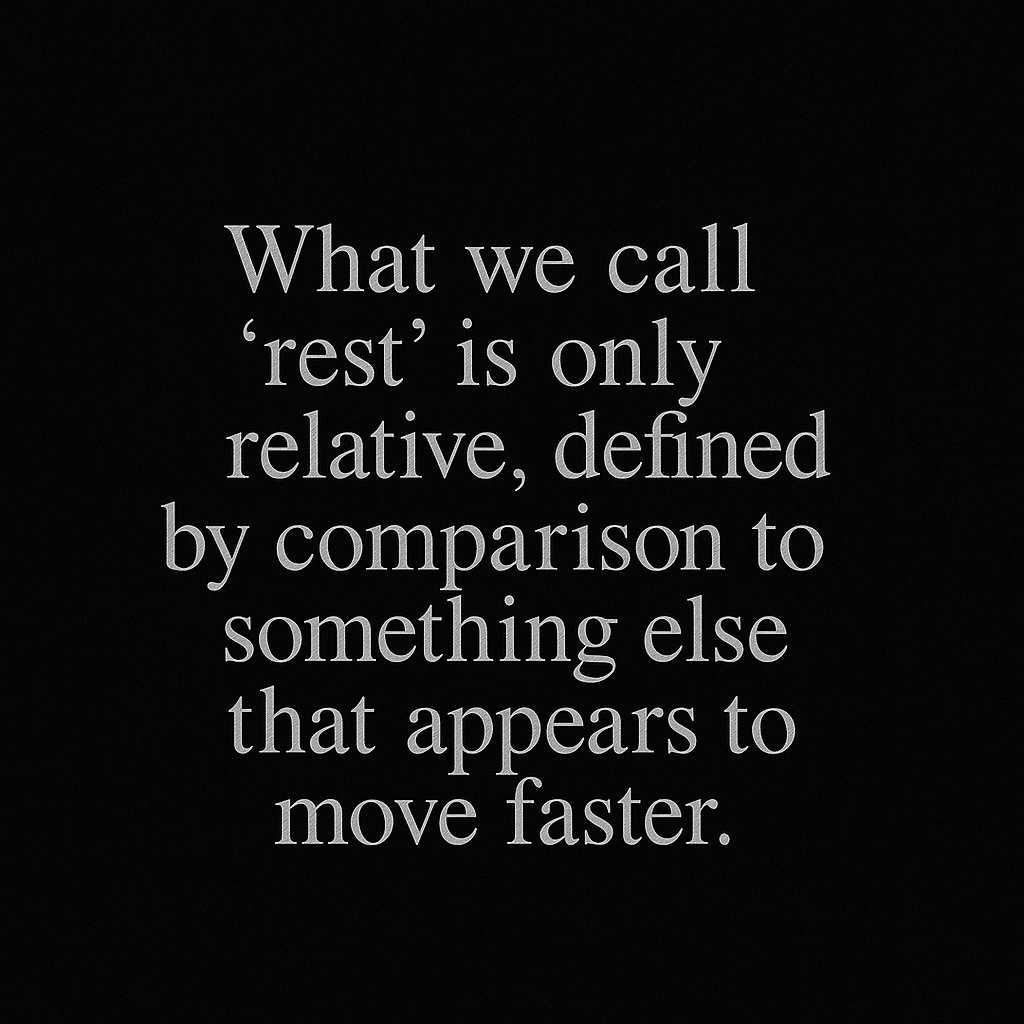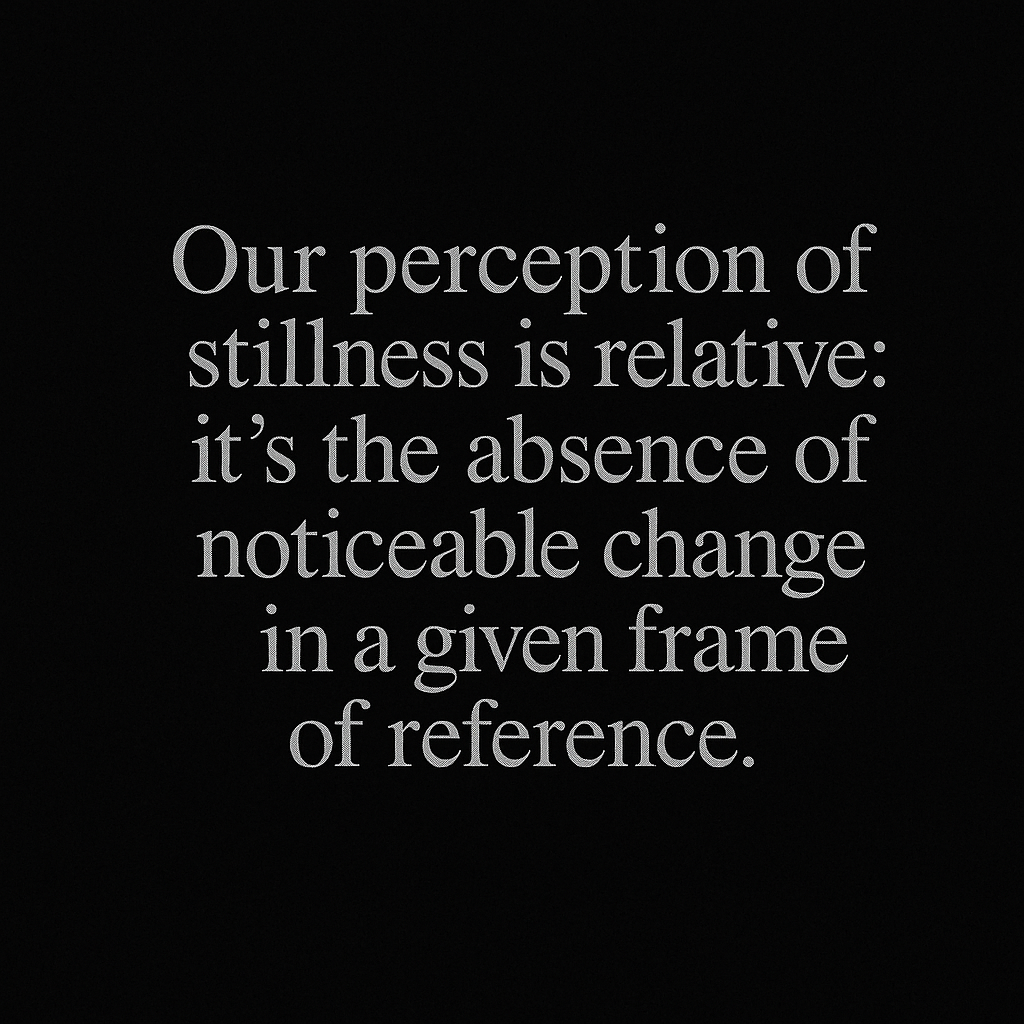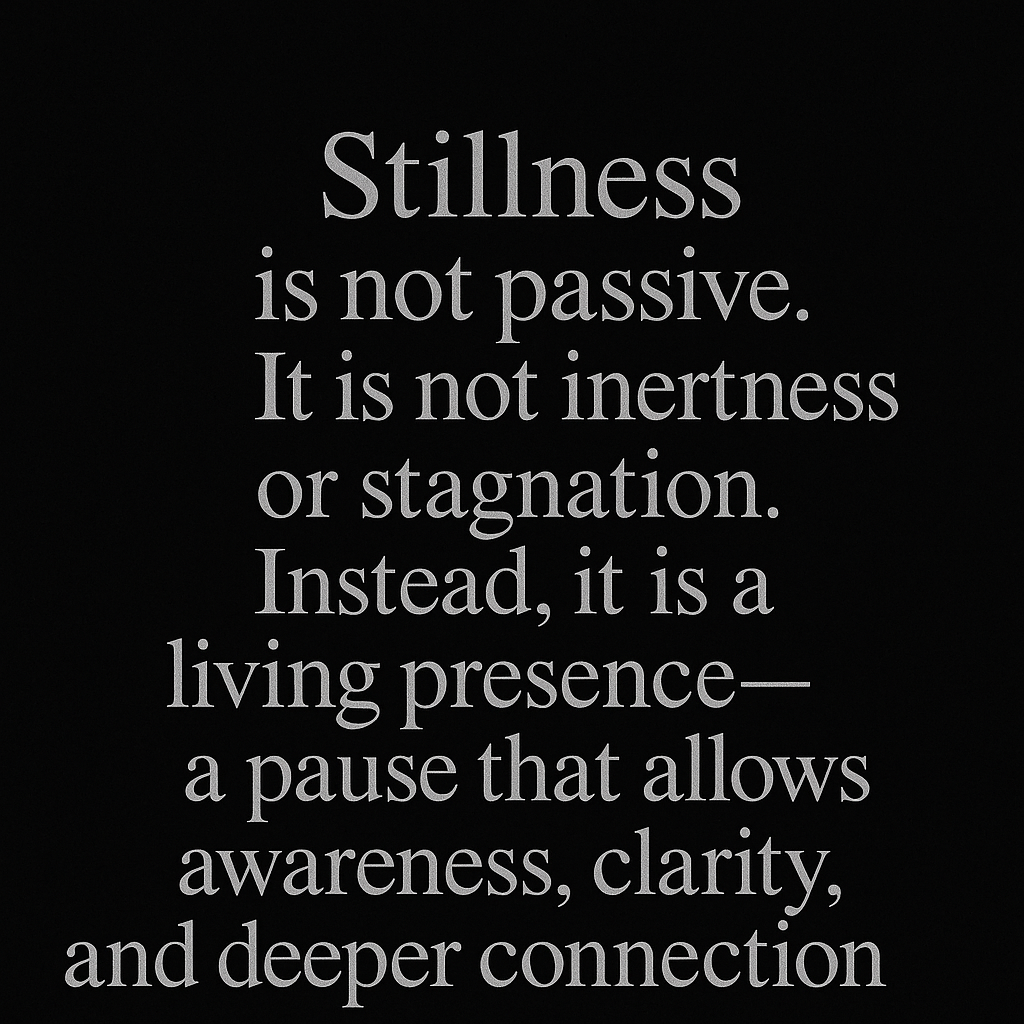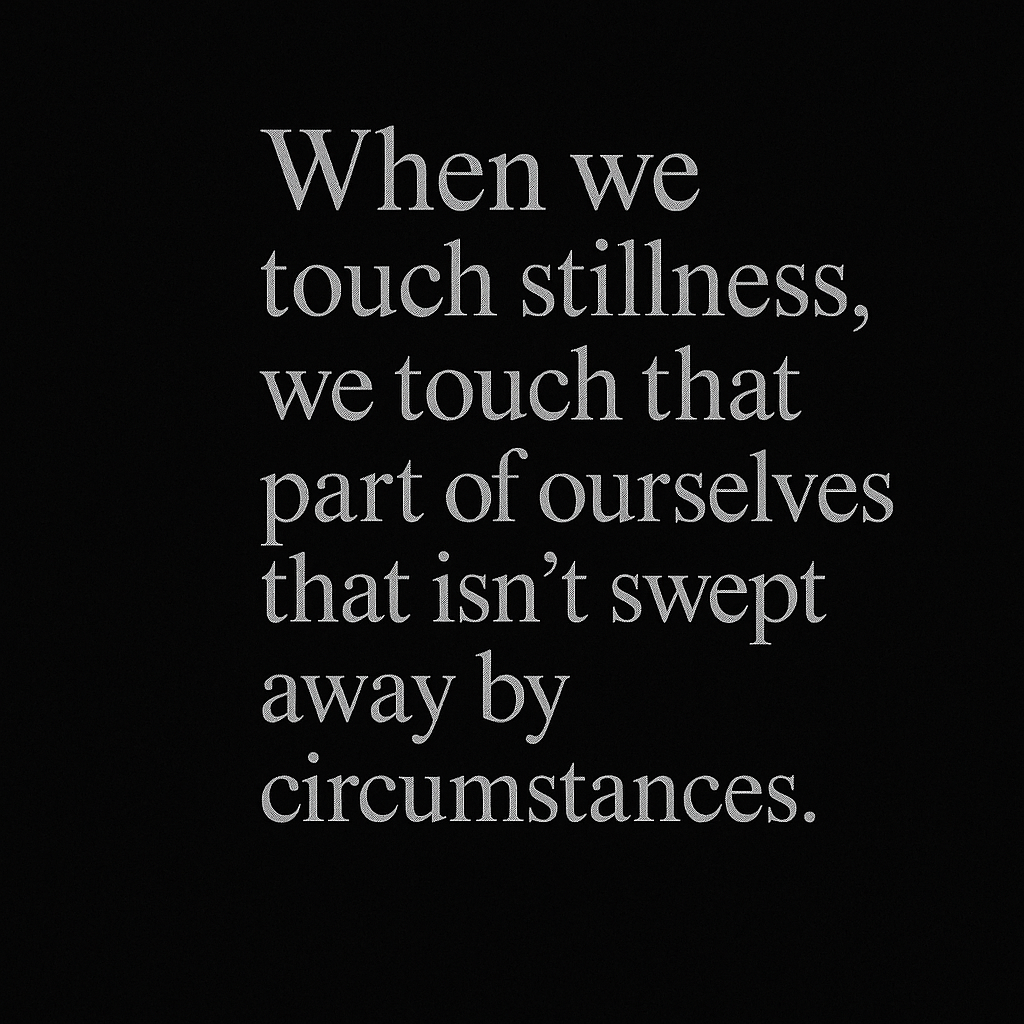We live in a world that rarely slows down. The hum of traffic, the buzz of our phones, the constant scroll of information—motion seems to define modern life. Even when we sit quietly, our thoughts keep racing, our hearts keep beating, our cells keep firing. Which raises an interesting question: does stillness actually exist?
At first glance, the answer seems obvious. A rock lying on the ground is still. A room in the early morning before anyone wakes feels still. A held breath, a long pause, a frozen moment—these are experiences of stillness. But if we look closer, science, philosophy, and practice all suggest something more nuanced. True stillness may be elusive, yet it remains one of the most valuable states we can cultivate.
The Physics of Motion: Nothing Is Ever Truly Still
From the perspective of physics, absolute stillness is an illusion. Even the objects that appear motionless to our eyes are anything but static.
At the atomic level, every particle vibrates. Electrons swirl in probability clouds, protons and neutrons shift within nuclei, and energy ripples through the quantum field. That rock lying motionless on the ground? Its molecules are buzzing with motion. Its atoms hum with vibrations at unfathomable frequencies.
Zoom out, and the same is true. Our planet spins on its axis at over 1,000 miles per hour, orbits the sun at 67,000 miles per hour, and hurtles through the galaxy at half a million miles per hour. To stand “still” is really just to move in unison with the Earth’s great whirl.
On a cosmic scale, even space itself is expanding. There is no fixed point of reference—no absolute stillness anywhere. What we call “rest” is only relative, defined by comparison to something else that appears to move faster.
From this lens, the universe answers our question clearly: no, stillness doesn’t exist in a literal, physical sense.
The Human Perception of Stillness
And yet, we experience stillness every day. How?
The human nervous system filters reality into something usable. We don’t notice the atomic vibrations or the planet’s spin. What we notice is what changes in relation to us. A car zipping past. A tree swaying in the wind. A breath entering and leaving the body. When change slows down enough—or becomes imperceptible—we call it stillness.
This is why a mountain lake at dawn feels still, even though water molecules are vibrating, the Earth is spinning, and our bodies are buzzing with cellular activity. Our perception of stillness is relative: it’s the absence of noticeable change in a given frame of reference.
In this sense, stillness does exist—not as an objective condition, but as a subjective experience.
The Philosophical Meaning of Stillness
Philosophy and contemplative traditions expand this idea even further. Stillness is not just about the absence of motion; it’s about the quality of being.
Stoics spoke of stillness as inner calm, the ability to remain steady in the face of life’s turbulence. Taoist philosophy describes stillness as harmony with the natural flow, a space where we stop striving and begin aligning. Buddhist practice often centers around cultivating “quiet mind” through meditation—not to freeze thought, but to stop clinging to it.
In these traditions, stillness is not passive. It is not inertness or stagnation. Instead, it is a living presence—a pause that allows awareness, clarity, and deeper connection to emerge. To be still is to step outside the constant swirl of reaction and find the ground beneath it.
The Paradox of Motion and Stillness
Here’s where it gets interesting: stillness and motion aren’t opposites. They exist together. You cannot recognize stillness without knowing motion, and motion is defined only in contrast to stillness.
Think of a snow globe. Shake it, and the flakes swirl chaotically. Let it sit, and the flakes slowly settle to the bottom. The water inside is never completely motionless, but the settling creates a sense of stillness. Our minds work the same way. Thoughts swirl, emotions shake, and eventually, with time and attention, things settle.
Stillness is not the absence of movement but the balance within it.
Cultivating Stillness in Daily Life
If stillness isn’t absolute, why does it matter? Because in our restless, overstimulated world, stillness is a resource—one we are losing, but desperately need.
Here are a few ways to practice stillness:
1. Breath Awareness
The breath is a rhythm we can tune into anytime. Try noticing the quiet space at the end of an exhale, the micro-stillness before the next inhale begins. That pause, however brief, is a gateway into stillness.
2. Intentional Pauses
Between activities, insert a deliberate pause. Before opening your phone. Before answering an email. Before speaking. These tiny spaces become anchors of stillness in the flow of the day.
3. Nature Immersion
Step into environments that embody stillness—early morning woods, a calm lake, a quiet snowfall. Let your senses absorb the slower rhythms. The nervous system entrains to the environment.
4. Movement as Stillness
Paradoxically, stillness can emerge from mindful movement. Practices like yoga, Tai Chi, or even walking meditation use gentle motion to cultivate inner quiet. It’s less about freezing the body and more about harmonizing with its natural flow.
5. Mental Rest
Stillness of the mind doesn’t mean shutting thoughts off. It means watching them without chasing. Meditation, journaling, or simply sitting without distraction can invite this quality.
6. Sleep
Sleep, too, is a powerful form of mental stillness. While the brain remains active in cycles of repair and memory consolidation, the surrender of conscious control creates a unique pause. Each night offers a natural reset—a daily reminder that rest is as essential to clarity as effort.
Why Stillness Matters
In a culture that worships productivity and motion, stillness is radical. It restores nervous system balance, sharpens focus, and deepens creativity. It interrupts the endless chase for the next thing and brings us back to presence.
On a deeper level, stillness reveals that we are more than our activity. Beneath the racing thoughts and constant motion, there is a steady awareness. Call it consciousness, call it presence, call it soul—whatever the word, it doesn’t move. It simply is.
When we touch stillness, we touch that part of ourselves that isn’t swept away by circumstances. That’s why stillness, even if it doesn’t exist as a physical absolute, is one of the most real and transformative experiences available to us.
Closing Thought
So, does stillness exist? Physically, no. Everything is in motion, from the smallest particle to the largest galaxy. But perceptually, experientially, and spiritually—yes. Stillness exists as a state we can cultivate, a perspective we can adopt, and a practice that can change how we live.
Perhaps the truest answer is this: stillness exists wherever we choose to find it. In the pause between breaths. In the gap between thoughts. In the quiet presence we carry, even while the world keeps spinning.



